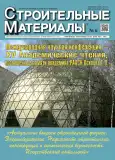Abstract
The abstract generalization of the specifics of fatigue degradation of cement composites due to structural and physical heterogeneity, ambiguity of energy and mechanical effects of induced changes, interdependence of impacts and response, etc., is presented, which together do not make it possible to use the methodology and principles of the limit state method for its assessment. A phenomenological approach to the design accounting of fatigue is proposed by introducing a normative classification of the resistance of composites to non-stationary influences. In the experimental part of the work, prismatic samples of two series were tested: concrete and fiber concrete with polypropylene fibers. All tests were carried out in automatic mode according to a specially developed program at the Instron 5989 test complex, in compliance with the constancy of the deformation rate of the samples of 0.04 mm/s. External influences are modeled by 50 load-unloading cycles with an amplitude of η=0.8 and zero asymmetry (ρ=0). Cyclic loading was completed by monotonous compression until complete destruction of the samples. The acceptability of the laws of the kinetic concept of strength and its criterion (failure time) for assessing fatigue durability is experimentally and analytically substantiated. The practical identity of the kinetics of resistance time and significant indicators of operational suitability is confirmed.












